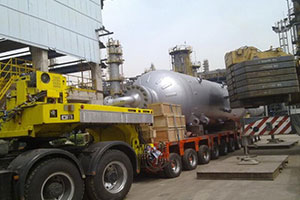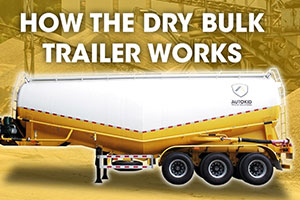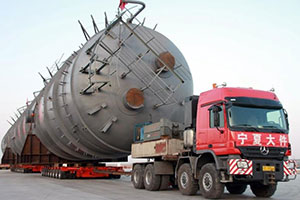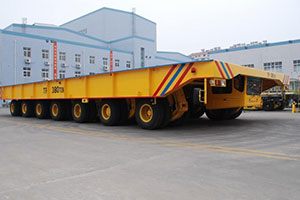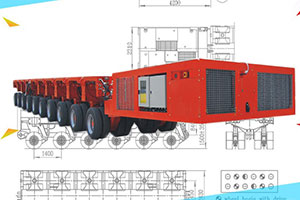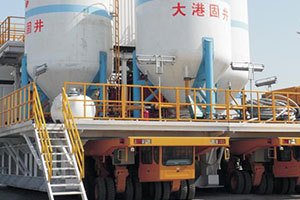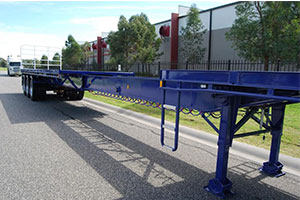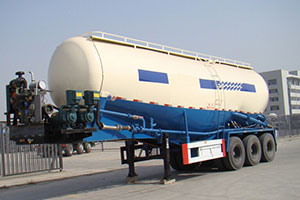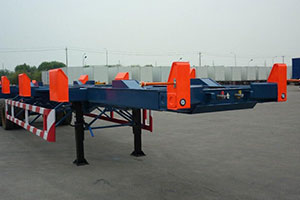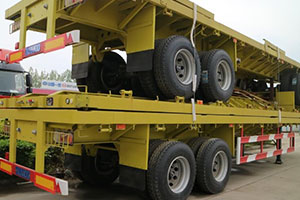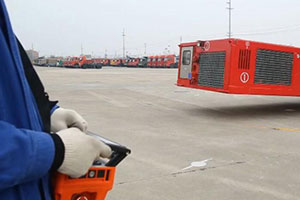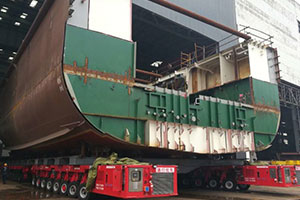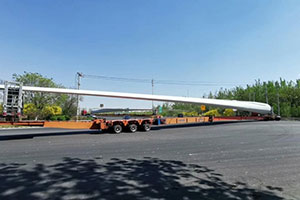What is an extendable / telescopic trailer ( windmill tower / wind turbine blade trailer)?
Resources | by
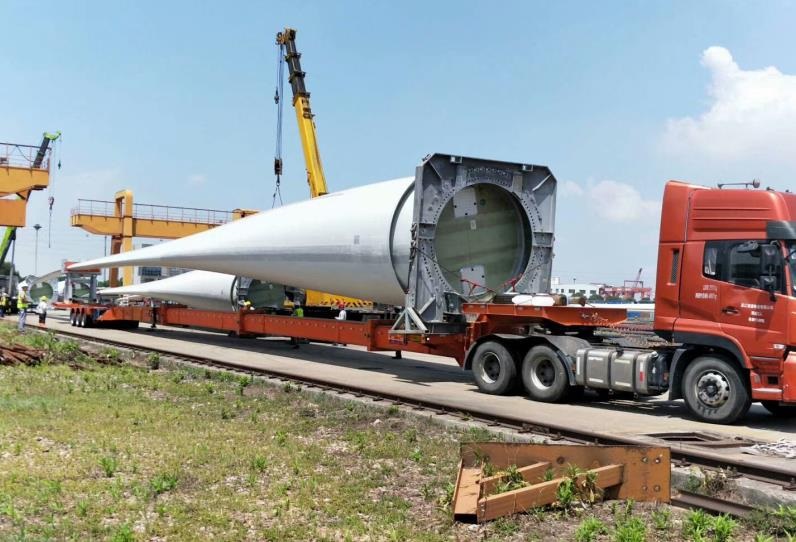
In this post, we will introduce you to the extendable sometimes called the telescopic trailer which is used to transport overlong cargo, such as wind turbine blades, windmill towers, bridge, steel beams and so on.
The trailer’s length can be up to 62 m with a maximum weight capacity of up to 30 ton.
One. Main structure of telescopic trailer
The trailer’s main structure has FOUR distinct features constructed of a high strength design and material to enhance its function and operations.
This broadens the scope of use for this kind of trailer especially for handling different types of loads and for transportation on different terrain. They include the Gooseneck, the Steering Structure, the extendable beam and the tail platform.
I. Gooseneck
The point of connection between the trailer and the truck is a Gooseneck design. Commonly, the gooseneck can lift up and down to meet the different height of the 5th wheel of a truck.
When the truck steers, gooseneck can pass the signal, and the trailer starts to steer.
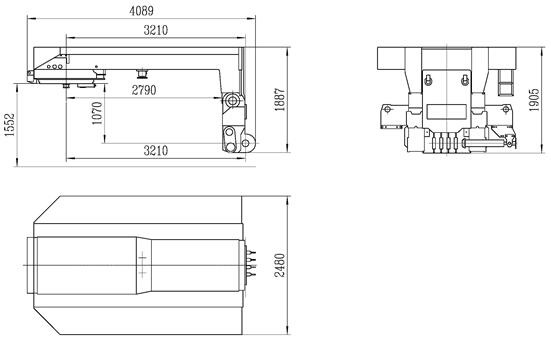
STZ V gooseneck
II. Steering structure
Steering is a very important aspect of this kind of trailer. Therefore, there is a steering structure designed to meet efficient steering capabilities during transportation.
Because the trailer’s length can be up to 62m, commonly rear axles need steering function to help trailer get through a curved road. There are three steering structure configurations to help this trailer navigate well on the road. These include:
First. Hydraulic Bogies
This hydraulically controlled design is meant to achieve a ±55° Steering Angle. The structure is of a more tough design and construction aimed at making it efficient in steering.
However, due to the hydraulic attachments and other elements of the system, it is expensive. In some occasions as need would arise, the hydraulic bogies can also be controlled remotely by using a controller.
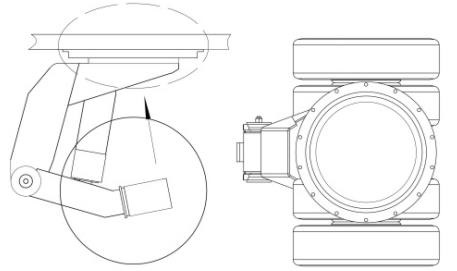
Hydraulic bogies
Second. Turntable steering
The turntable steering design is meant to attain a ±45° steering angle. The trailer can steer by a steering turntable through axles installed on turntables.
This design ensures high reliability. However, it is relatively costlier compared to other designs. Below is a diagrammatic representation of the turntable steering.

Turntable steering design
Third. Self steering Axles
This is a steering structure design with an axle steering of ±45° angle. It is a simple steering structure that is easy to use and maintain.
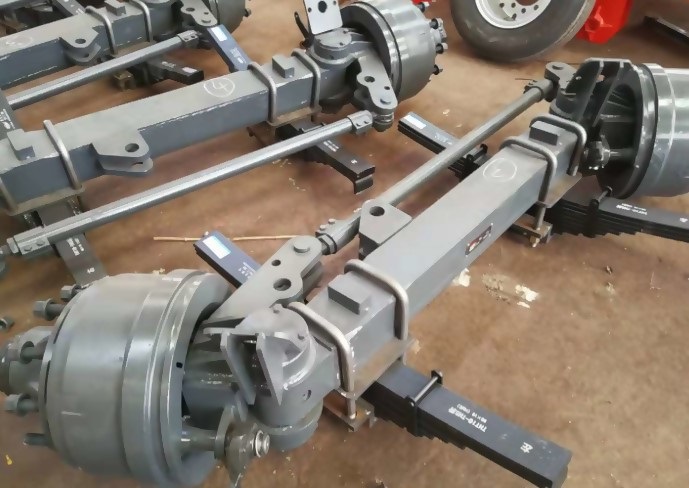
Steering axles
III. Extendable beam
The extendable trailer comes with capabilities of adjusting it to its desired length for taking different lengths of loads as desired in a given application.
That way, room can be created to take up bigger loads. The extendable part is therefore made tougher for the reason of preventing sagging due to too its length. That way, safety is enhanced during transportation from one point to another.
The extendable beam also serves other functions in supporting the functionality and operations of the entire trailer. Ideally, this is where hydraulic oil tubes and electric wires are also installed.
They are needed for passing signals from the gooseneck to their receptors.
Most importantly, the extendable beam can have 2- 4 levels of extension. The trailer can, therefore, be made shorter or longer using these extensions depending on the size and nature of the load that needs to be transported.

Three levels of extension
IV. Tail platform
In order to make the trailer carry longer cargo, there is always a tail platform provided in the trailer. This ensures that the load is perfectly held together during loading, transportation and offloading.
To suit different applications and use, there usually are two structure types of the tail platform. They include the folding structure and pulling structure as illustrated below!
• Folding platform
In this arrangement, the tail platform is designed to fold back on the extendable beam when not in use. To take up a bigger load, it is usually unfolded from its resting position when not in use. See the diagrammatic representation below:

The Folding platform
A pulling tail platform design is designed to pull out when needed for use and be pushed back when not in transportation. See the diagrammatic representation below:

The Pulling Platform
V. Material
Trailer construction materials are chosen based on the amount of load it is expected to carry and the force acting on the bed during loading, transportation and offloading.
Other considerations include the size and dimensions in general. The extendable trailer’s max length can be up to 62m, and a capacity of 30tons (when it is extended).
For that reason, the choice of material is very key in the manufacture of this kind of trailer.
We use Q460 material (with a yield strength of 460Mpa) to make the trailer. The choice has been made based on research and has been tested on various scenarios before being released into the market.
It has been proven on its reliability on many times especially in China where it has provided reliable results in taking different kinds of loads.
Construction has been made based on the characteristics of the material as tabulated below inclusive of safety factors. That gives the extendable trailer enough strength to take up the specified weight and travel speeds during transportation.
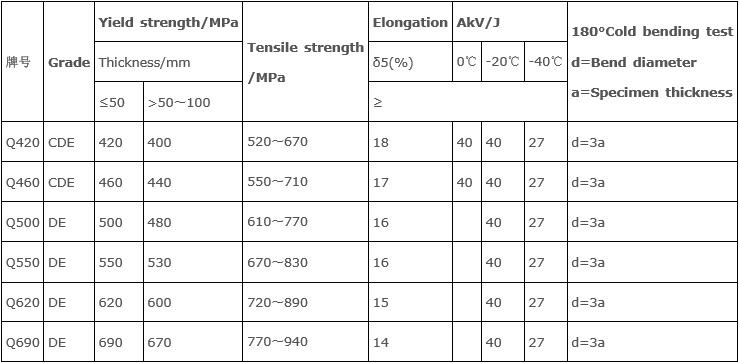
Material strength
VI. Control method
Handling and controlling the extendable trailer is a very vital part of our design. A lot of safety consideration has been made to ensure safe operations when moving goods from one point to another.
Safety is ensured both for the users and the goods themselves.
There are three methods used to control the steering of the extendable trailer. These methods provide the user with enough options for swift and safe operations. They include:
1. Remote control
2. The control box on the trailer
3. Automatic steering based on the signal from gooseneck
Note: The automatic steering based on the signal from gooseneck is more convenient and efficient to use than the other modes of steering. Therefore, it is important to take note of that depending on the transportation scenario for a given cargo!
Two. Specs Sheet for Reference
Extendable trailer specifications and features are what distinguishes them from different kinds of trailers. Here are some specs of extendable trailers.
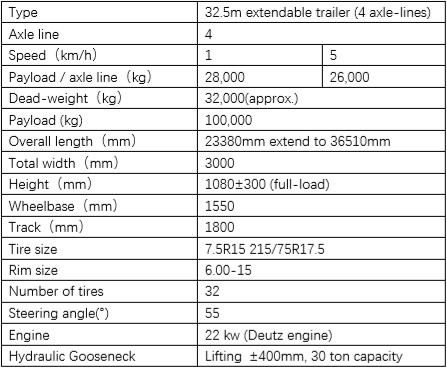
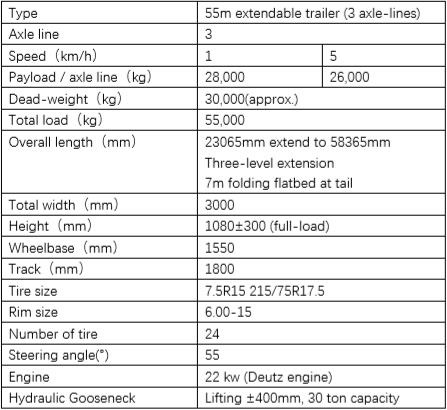
Users are always provided with a specification sheet showing maximum and minimum weight speeds, wheelbase size among other features.
Three. Why China Wind Turbine Blade Trailers Are More Competitive?
There has been a lot of continuous research work and use of wind turbine blade trailers in China, making them more competitive than those from other parts of the globe. Here are some of the reasons as to why:
I. China wind industry.
China’s wind industry has grown rapidly and that is why it makes the extendable trailer manufacturer accumulate a lot of experience in handling different project needs.
This industry has presented China with vast opportunities for manufacturers to build and test their trailers for the transportation of wind turbine blade.
Over the years, it has been a process of continuous quality improvement presenting opportunities for fine-tuning designs and eliminating any design flows.
This has resulted in optimized designs that have proved to be reliable following their use far and wide in China.
II. Ease of Customization.
The ability to customize has been key for Wind turbine blade trailer manufacturers making it possible to meet different countries requirements.
This has especially been as a result of the vast experience realized during manufacturing.
We have been able to use the knowledge and skills acquired to match them with regulations outside China and develop trailers for use in different parts of the world.
III. Competitive price.
Cost is usually a key aspect of manufacturing. Effective manufacturing technology and procedures have made it possible to come up with cost-effective trailers. This has made it easier for our customers to win in bidding.
Conclusion
Extendable trailers continue to find a major use and application around the world. This is particularly in such industries as the wind industry and many others whose operations would require the use of this kind of trailer.
This type of trailer gives the user great options of control and steering and is made of a tough material that gives it the strength to handle enough weight during transportation.
They are reliable for use in handling complex goods that would otherwise have been difficult to move from one point to another!
